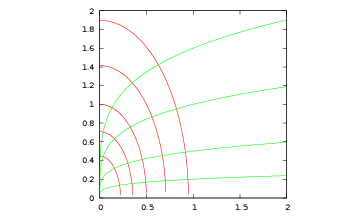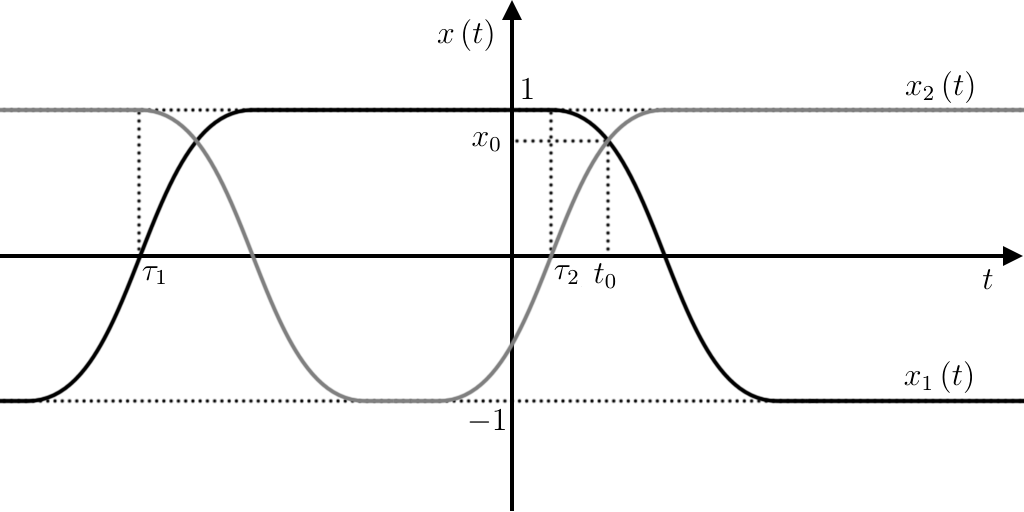22 Ordinary Differential equations[1QB]
To solve the following exercises, it is imporant to know some fundamental results, such as: the existence and uniqueness theorem 1 , Gronwall’s Lemma; and in general some methods to analyze, solve and qualitative study Ordinary Differential Equations (abbreviated ODE). These may be found e.g. in [ 25 , 20 , 2 ] .
- E419
[1QC]For each point \((x,y)\) of the plane with \(x,y{\gt}0\) passes a single ellipses \(4 x^ 2 + y^ 2 = a\) (with \(a{\gt}0\)). Describe the family of curves that at each point are orthogonal to the ellipse passing through that point. See figure 6.
Hidden solution: [UNACCESSIBLE UUID ’1QF’]

Figure 6 Ellipses (in red) and curves orthogonal to them.
Let \(I\subseteq {\mathbb {R}}\) be an open interval.
Let \(F:I× ℝ→ (0,∞)\) be a positive continuous function, and let \(f: I→ℝ\) be a differentiable function that solves the differential equation
Prove that \(x\) is, either always increasing, in which case \(f'(x)=\sqrt{F(x,f(x))}\) for every \(x\), or it is always decreasing, in which case \(f'(x)=-\sqrt{F(x,f(x))}\); therefore \(f\) is of class \(C^ 1\).
Hidden solution: [UNACCESSIBLE UUID ’1QJ’] [1QK]Prerequisites:6.
Describe all the differentiable functions \(f:ℝ→ℝ\) that solve
Show that if \(-1{\lt}f(x){\lt}1\) for \(x∈ I\) open interval, then \(f\) is a sine arc, for \(x∈ I\).
Show that all solutions are \(C^ 1\), and that they are piecewise \(C^∞\).
Note that \(f≡ 1\) and \(f≡ -1\) are envelopes of the other solutions, as explained in the section 22.4.

Hidden solution: [UNACCESSIBLE UUID ’1QM’] [1QN] Let \(f:[0,1]→ℝ\) be a function \(C^ 2\) such that \(f(0)=f(1)=0\) and \(f'(x)=f(x)f''(x)\) for every \(x∈[0,1]\).
Prove that the function \(f\) is identically zero.
Hidden solution: [UNACCESSIBLE UUID ’1QP’][UNACCESSIBLE UUID ’1QQ’]